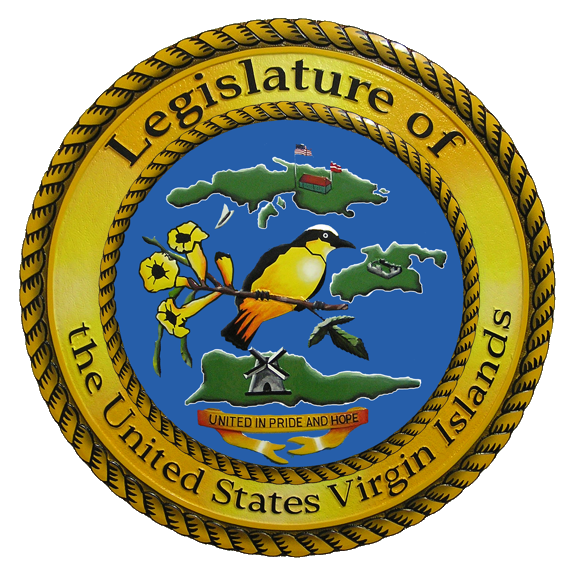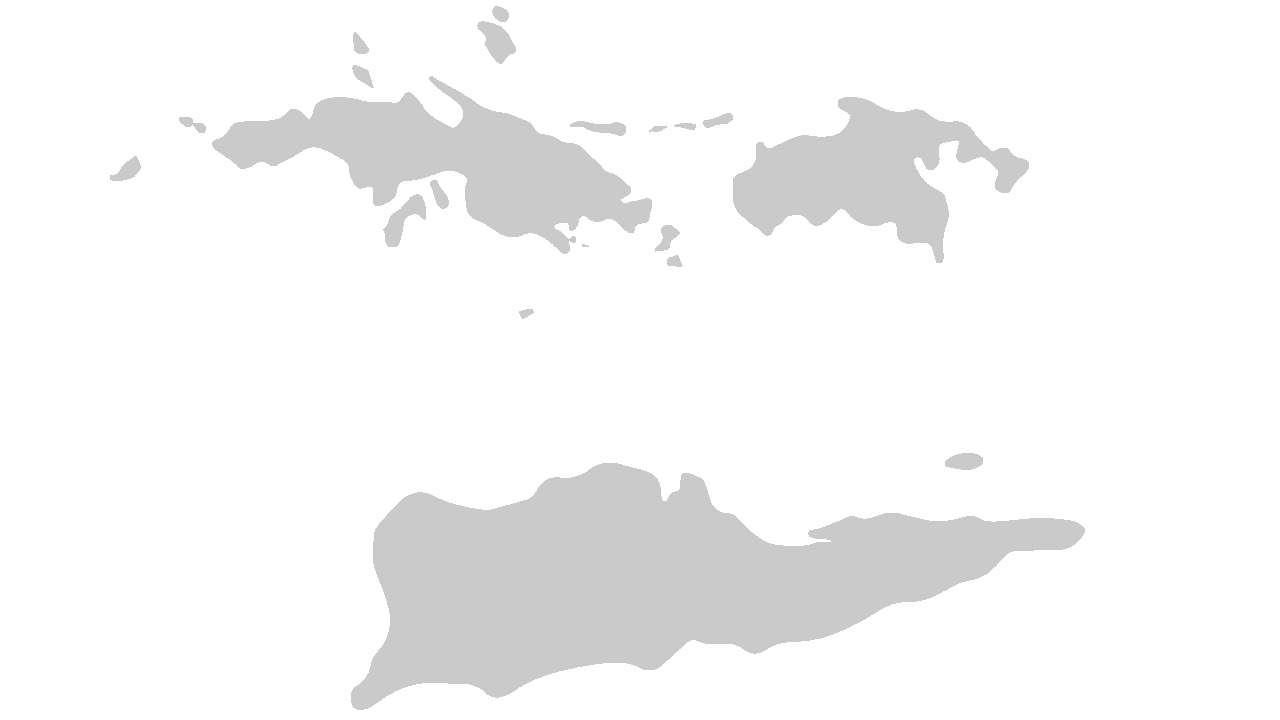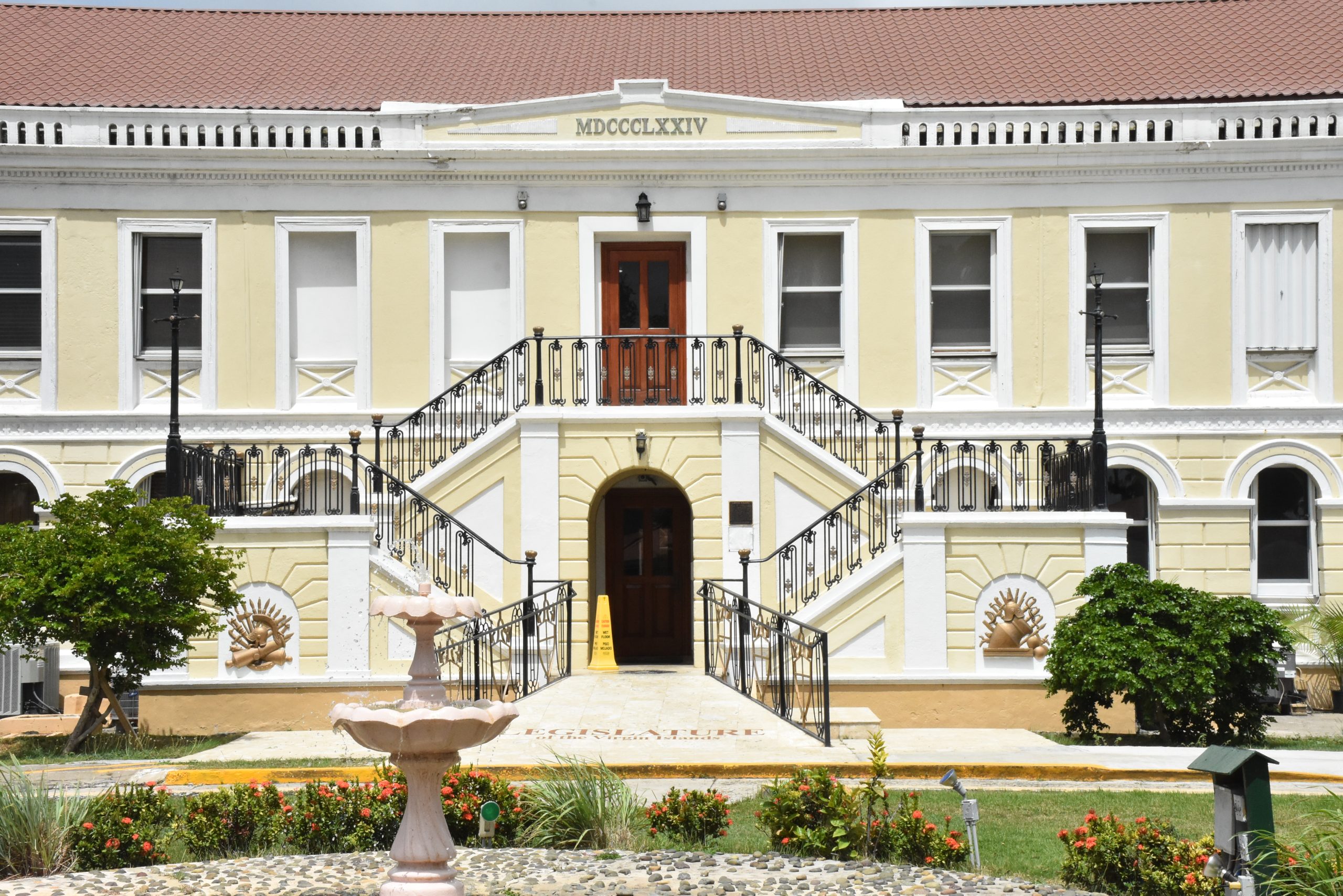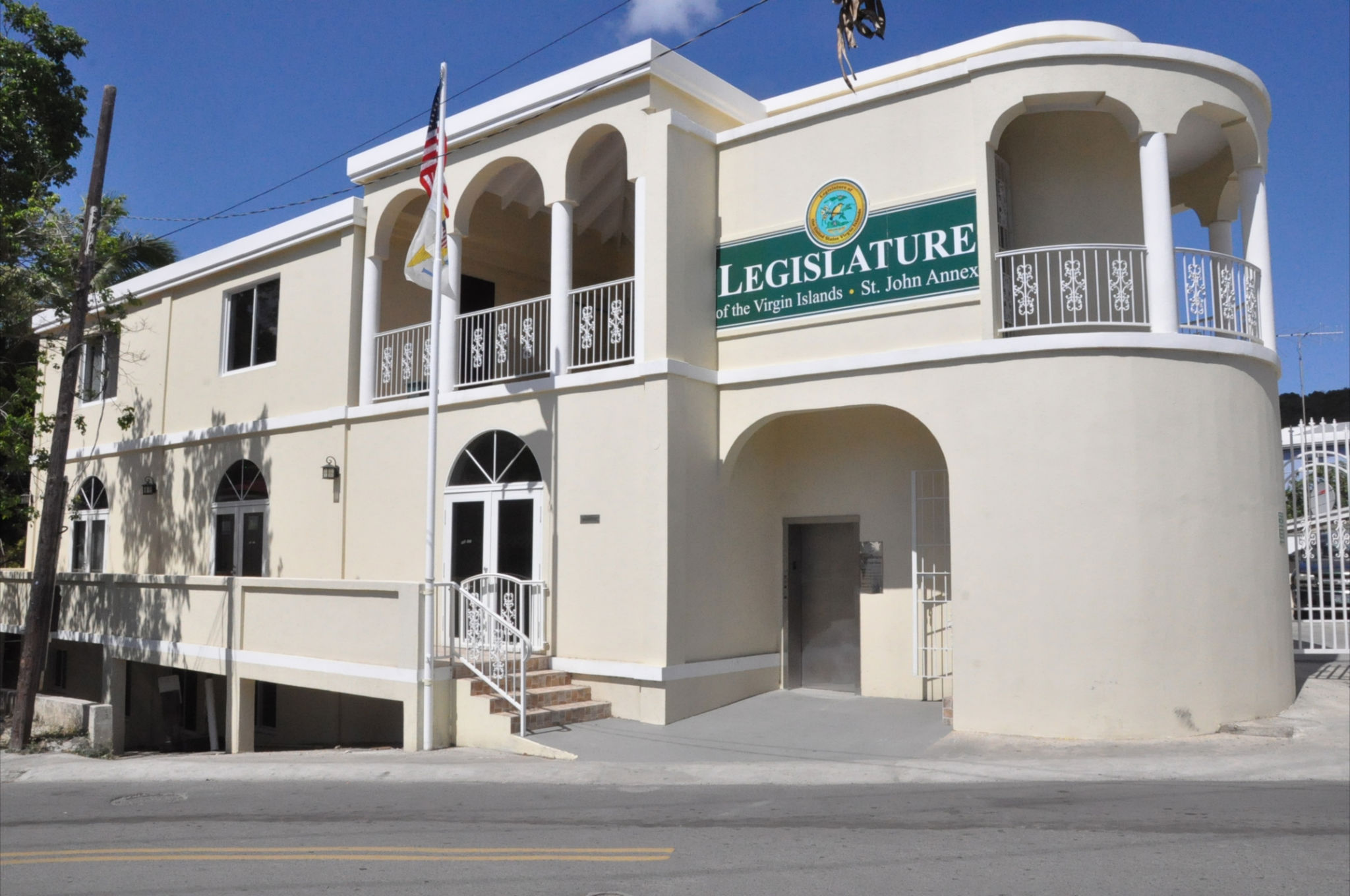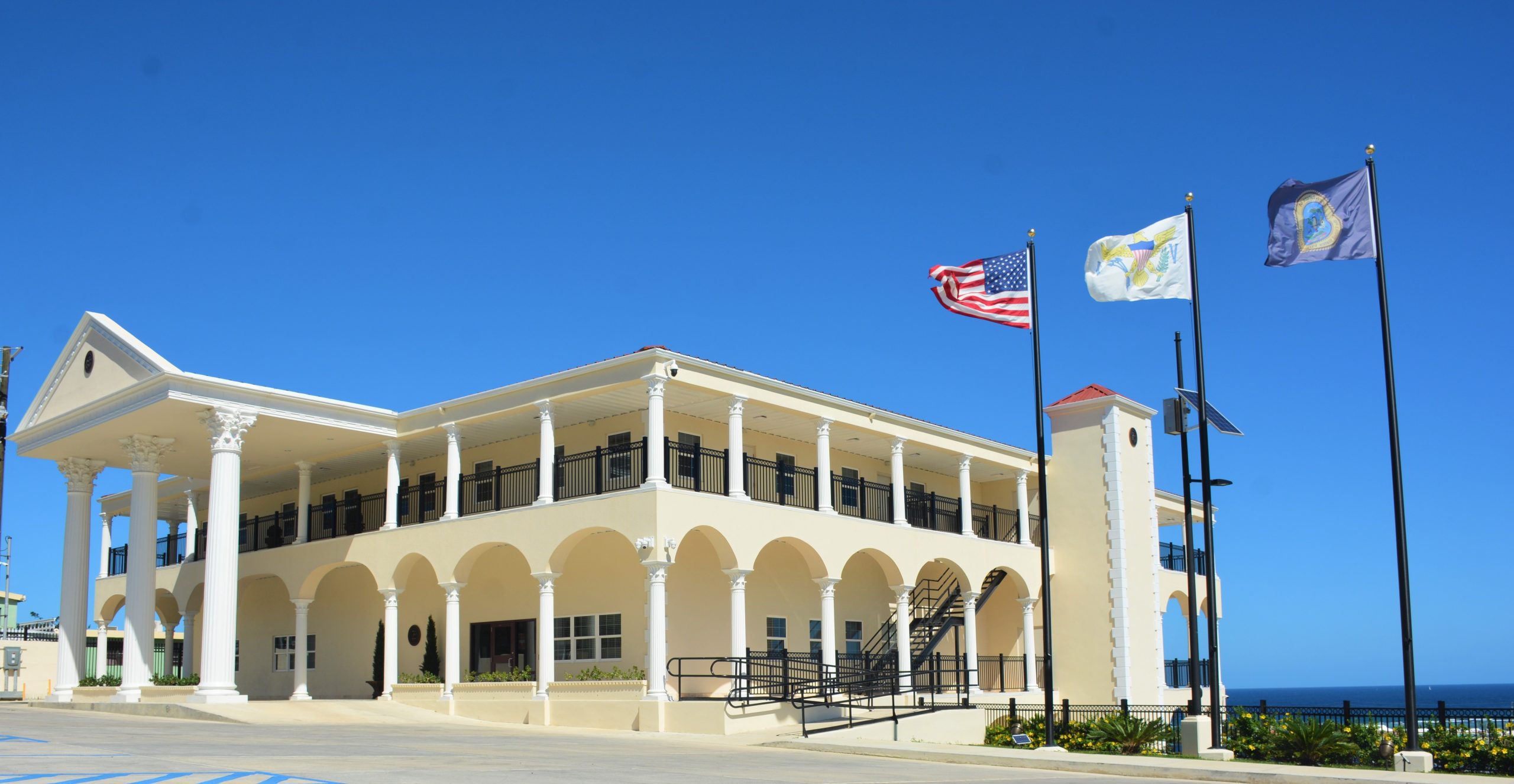ST. THOMAS – The Committee on Disaster Recovery, Infrastructure and Planning, under the leadership of Senator Milton E. Potter convened in the Earle B. Ottley Legislative Hall. Lawmakers received an update from the Virgin Islands Waste Management Authority concerning the status of planned, in-process, and completed projects; the status of all federal and local funding identified for VIWMA’s projects, as well as challenges the authority has encountered with respect to its’ role in the territory’s disaster recovery effort. Additionally, the Committee received an update from the Virgin Islands Water and Power Authority concerning its planned, in-process, and completed projects; the status of all federal and local funding identified for WAPA’s projects, as well as challenges the authority has encountered with respect to its role in the territory’s disaster recovery efforts.
Senator Milton Potter reminded the body of the importance of the establishment of this committee, which was to provide the necessary oversight that federal funding is effectively managed and making sure that disaster recovery projects are appropriately done. Senator Potter implored the body that we must use lessons learned to improve future disaster planning.
In Block One, Roger Merritt, the Executive Director of the Virgin Islands Waste Management Authority delivered testimony. Per Merritt’s testimony, he reminded the public that when the Waste Management Authority was created in 2004 from the Department of Public Works, it was immediately tasked with trying to comply with existing DOJ solid waste and wastewater consent decrees that were imposed against the territory. This meant that the authority was faced with the burden of trying to respond to consent decrees, as well as managing other costs associated with managing the authority from its inception. Merritt stated that the authority inherited an outdated wastewater system, which was damaged from Hurricanes Irma and Maria in September 2017, along with a solid waste system that oversees two unpermitted and unlined landfills, which originally began as dump sites. The Authority has strived to bring both systems into compliance with all local and federal laws. The Virgin Islands Waste Management Authority is unique because in most jurisdictions in the mainland, most authorities are only responsible for solid wastewater services. Most water authorities, like WAPA would be responsible for drinking water and wastewater services. These services are expensive. According to Merritt, the wastewater system that VIWMA is tasked with maintaining has outlived its useful life and should have been replaced decades ago.
The Authority manages the territory’s solid waste collection, transportation, and disposal network. Municipal solid waste is collected from bin sites, convenience centers, public receptables and curbside locations and ultimately disposed of at the Bovoni and Anguilla Landfills. Approximately six hundred tons of waste per day is disposed of daily and nearly 200,000 tons of waste is disposed of annually in the territory’s landfills. The Authority intends to eliminate the majority of unmanned bin sites by constructing and operating convenience centers throughout the territory. The Authority has been the recipient of CDBG-DR trance funding as a subrecipient grant agreement between the Virgin Islands Housing Finance Authority and VIWMA. This provides dunging for the implementation of designated projects designated in the Tranche 2 Action Plan under the Housing and Urban Development infrastructure Repair and Resiliency program, which was directly linked to damages related to Hurricanes Irma and Maria. The Waste Management Authority has submitted applications for the convenience centers and landfill projects in the amounts of $18,046,064. and $46,760,901, totaling $64,806,965.
Included in the CDBG-DR Trance 2 Funding are the southeast Fill project for the Anguilla Landfill on St. Croix and the partial phased closures (Phases 1-6). The southeast fill area will increase airspace and gave the authority additional time to select and build a new solid waste management facility on St. Croix. The proposed closure of the Anguilla Landfill would comply with existing DOJ consent decrees. The VIWMA is in the application stage of the project and has complied with the request of the HFA by receiving support letters from the DOJ, VIPA, and DPNR. VIWMA is working with DPNR on permits needed for these projects. The authority is also collaborating with the Virgin Islands Port Authority to update the Anguilla Landfill lease to establish VIWMA’s site control. This collaboration between VIWMA and federal agencies ensures the projects will be completed by the grant expiration deadline of September 2026. In the CDBG-DR Tranche Three Grant, the funding has been obligated in HFA’s CDBG-MIT Action plan and is currently developing the grant applications so VIWMA can apply for the necessary funds. Waste Management anticipates receiving the application packages no later than December 2023. The funding is earmarked for landfill expansion and closure and solid waste management facility projects. VIWMA has continued to work with federal agencies to review damages and formulate projects, which has resulted in the obligation of 16 FEMA category a and b solid waste projects to date. These projects total $16,095,847,05. Ten of these projects have been reimbursed, five have been fully reimbursed and five have been partially reimbursed. Total reimbursement to the authority totals $11,823,160,28 so far. Project worksheets totaling $4,272,686.72 are being reviewed and processed for reimbursement and payment to the authority.
Approximately four million gallons of wastewater are collected, treated, and discharged every day at the Authority. St. Croix accounts for approximately 1.6 million gallons per day, St. Thomas accounts for 2.1 million gallons per day, and St. John accounts for 130,000 gallons per day. Wastewater infrastructure in St. Croix consists of approximately 120 miles of sewer lines; fifteen pump stations, 1800 manholes and one wastewater treatment plant. In St. Thomas/St. John, there are approximately three hundred miles of sewer lines; fifteen pump stations, 2500 manholes and seven wastewater treatment plants. The GVI and the Authority are close to fulfilling the thirty-year consent decree. The Authority started to identify staff in FY2022 and has hired a Wastewater Operations Technical Manager and District Manager to help oversee operations at both plants upon expiration of the contract. This will potentially result in annual savings of nearly $4 million. FEMA continues to assist VIWMA with emergency repairs and upgrades to the wastewater collection and treatment infrastructure because of damages sustained after the 2017 hurricanes. VIWMA submitted the prudent replacement cost estimate in Early May to FEMA. FEMA completed the cost estimate and provided a cost estimate of 1.25 billion. Based on discussions, it is likely that the prudent replacement will increase beyond $1.25 million. It is on track to be obligated before the end of Fiscal Year 2023. VIWMA has received funding for FY 2015 through FY 2022 totaling $34,287,162 for pump station upgrades, sewer line repair, wastewater treatment plan upgrades and specialty equipment. Through the American Rescue Plan Act, ARPA, VIWMA was approved for $10,594,500 to support wastewater infrastructure projects for repair and maintenance of the wastewater treatment system for the St. Thomas/St. John District. Harold G. Thompson Wastewater Treatment Plant was awarded $310,000.00, The Donoe Road Sewer Infrastructure Rehabilitation Design was twelve awarded $10,000,000.00 and George Simmonds Wastewater Treatment Plant Replacement was awarded $284,500.00, and thus far has received 25% ($2,648,625). The Authority is in the process of finalizing the scope of work for these projects.
In Block Two, Andrew Smith, the Executive Director of the Virgin Islands Water and Power Authority delivered testimony. In testimony delivered by Smith, he mentioned that in total, over $2 Billion had been invested in the territory’s electric and water infrastructure, and that WAPA anticipates receiving over $1 Billion in additional funding for further investments, mainly for prudent replacement public assistance which will modernize the entire St. Croix water distribution to the latest standard. The island of St. Croix has recently experienced issued with discolored water. WAPA has begun to modernize sections of its water infrastructure through the support of EPA grants. However, the modernization of one section of the system can cause pressure issues in other sections of the system. New installations use PVC Pipes, but sometimes, water must travel though old iron pipes that can cause brown water, even in modernized sections. The age of the St. Croix infrastructure also poses a major challenge.
WAPA continues to harden its facilities with support from federal partners. Funding for composite pole installation and undergrounding of electrical transmission and distribution feeders helps harden the territory’s electrical grid from damage from natural disasters. Composite poll installation is approximately 90% complete territory wide. Cruz Bay St John undergrounding is complete, as well as the midland container port and golden grove undergrounding projects on St. Thomas. Additional undergrounding projects are scheduled to start soon to address other critical feeders in the territory. The modernization of substations is also important to the hardening of the territory’s electrical infrastructure. Funds have been appropriated to modernize the Donald C. Francois substation on St. Thomas, which serves critical infrastructure including the Schneider Regional Medical Center, Central Charlotte Amalie, as well as the Tutu, East End, and St. John Substation. Federal funding is supporting microgrids on St. Thomas, St John, and St. Croix which include renewable generation, battery energy storage systems (BESS) and electric distribution infrastructure that can function as an islanded electrical system.
Federal funds have also supported investments in water infrastructure. The Clifton Hill project on St. Croix is approximately 66% complete. Hannah’s Rest has not yet started construction. It is expected that this project will begin in January 2024 due to delays in receiving materials. Rehabilitation projects for Mahogany Estate and Blackbeard Hill have been submitted to DPNR for review. The American Rescue Plan Act, or ARPA, funding is earmarked for Nazareth to extend water service to the community. ARPA funding is also supporting two large utility coordination projects. The 30-mile pipeline Northside Road Rehabilitation project and the 5-mile Anna’s Retreat Phase 2 expansion project are in the planning and design phase. In all approximately $85 Million has been set aside for water projects. As discussed previously WAPA is pursuing a FEMA Prudent Replacement Public Assistance Program to support modernizing the entire St. Croix water system. Recent concerns about discolored water in St. Croix have made news. The age of the water distribution system in St. Croix is the source of this, as parts of the system are approximately 60 years old. Some of these pipes are ductile iron, which deteriorates over time. The majority of the brown water is due to the deterioration of the pipes, with the sediment ending up in the water. Per Smith’s testimony, low water inventory on St. Croix is also to blame for the discolored water. Due to drought, WAPAs water tanks are only about 50% full, with certain tanks that have fallen well below 50% in recent time. The St. Croix water system is a gravity fed system, meaning that the fuller a tank is, the more pressure it places on the water downstream. Good water pressure will result in increased flow rates in the system, which would reduce the brown water. Low inventory results in low water pressure, causing higher discoloration. WAPA has taken aggressive flushing programs to reduce the amount of brown water. A recent influx of sargassum has been the source of odors in water.
Smith reminded that WAPA does not make a profit on the rate it charges its customers. The rates are set by the Virgin Islands Public Services Commission. Smith affirmed that WAPA has historically charged its customers less than what it costs to operate, saying that this under recovery has crippled the authority. The increase in the water LEAC is to recover costs that WAPA is paying. Before the current increase in the water LEAC, WAPA Had not requested an increase in the water LEAC for two years, and wiper under recovered revenue it collected from its customers by approximately $2 Million, or almost 10% of WAPA’s total water revenue. WAPA is pursuing Prudent Replacement Public Assistance from FEMA that will replace the entire water infrastructure on St. Croix. Federal funding is supporting the installation of new generation at the Randolph Harley Power Plant on St. Thomas. Four new Wartsila generators are currently undergoing start up performance checks to make sure that they are operating properly. The generators are in the final steps of commissioning and will be in service before the end of September 2023. The generators operate on propane and are 30% more efficient than WAPA’s old generation. WAPA has also applied for a FEMA prudent replacement system assistance program which would support the investment needed to bring the Automated Metering Infrastructure (AMI) to best in class standards.
Senators present at today’s committee hearing included Milton E. Potter, Diane T. Capehart, Novelle E. Francis, Jr., Alma Francis Heyliger, Kenneth L. Gittens, Marise C. James, Javan E. James, Sr., Franklin D. Johnson, and Carla J. Joseph.
The Division of Public Affairs is committed to providing the community with accurate information on legislative proceedings and other events at the Legislature of the Virgin Islands.
####
